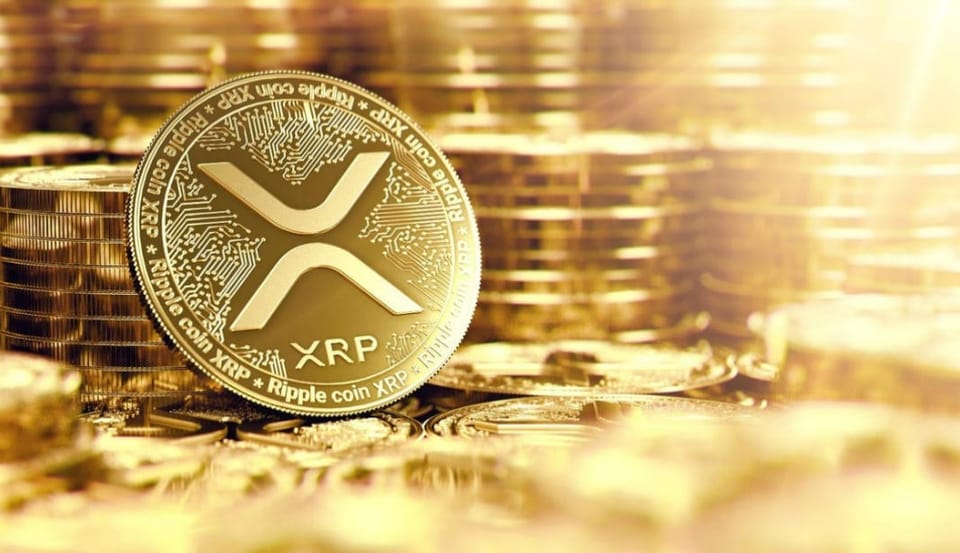Crypto Guide: What is Ripple, and What are its Use Cases and Features?

Ripple is a decentralized platform that allows fiat currencies and cryptocurrencies to be transferred across international borders, using the same network in real time, without intermediaries. XRP is the crypto designed to work on the Ripple network, and it's consistently one of the top coins by market cap.
Cryptocurrencies, including Ripple, are designed to change and improve how we complete online payments. Like other cryptocurrency projects, the Ripple Labs team aims to democratize access to online payments without the intervention of third-party intermediaries like central banks. The result is the use of a public blockchain that's open, transparent, and accessible, with transactions using cryptos that are fast and private. In addition, cryptocurrencies like XRP of Ripple Labs have become investment options, too, with many investing and trading XRP for its potential price increase.
However, like other popular cryptos, Ripple Labs has been the subject of questions and even investigations in recent months. In recent months, Ripple Labs has faced questions from the U.S. Securities and Exchange Commission (SEC) on whether the XRP can be considered a security. The debate on whether cryptos are securities is not new; in recent months, high-profile cases include Coinbase and the SEC's inquiry into Ethereum.
What is Ripple?
Ripple is a blockchain-based payment protocol and network that relies on its cryptocurrency, XRP. Unlike other blockchains, Ripple's main purpose is to act as a payment settlement asset exchange and remittance system. In a way, Ripple works like (and hopes to replace) the SWIFT system for international money transfers used by financial institutions when dealing with different currencies. The XRP platform aims to act as an intermediate exchange mechanism between two networks or currencies.
Ripple aims to be an effective replacement since the network can quickly confirm that the exchange went smoothly. The Ripple platform can facilitate transactions across all major currencies, including Bitcoin and gold. In addition to fast and efficient confirmations, the Ripple platform is cost-effective, with a standard fee of 0.0001 per transaction.
What is XRP?
XRP is a cryptocurrency that works on the XRP ledger, the blockchain developed by Jed McCaleb, David Schartz, and Arthur Britto. After engineering the blockchain, the trio founded Ripple Labs and used XRP as its currency for transactions. Ripple's blockchain works differently from that of other cryptocurrencies. With other cryptocurrencies, we have learned that transaction ledgers are open to the public, and anyone can verify transactions by solving complex equations. Although the ledger is public, it's still safe and secure since participants must agree with the verification before adding these.
Instead, the Ripple network centralizes most of its transactions. Anyone can download the validation software from the Ripple network. However, Ripple maintains a 'unique node list' that participants can select to verify transactions based on what they think is more trustworthy.
Ripple's current default list features 35 trusted validators, decides which validators to include in the list, and controls six of these nodes. What's interesting about the network is that it also allows its users to opt out of the default list and potentially remove Ripple-backed validators. In short, the network can continue approving transactions without Ripple getting involved in the validation process.
As part of the network procedures, validators update their ledgers every three to five seconds to match with other ledgers as new transactions come in. If a mismatch occurs, the process stops to find the issue. This mechanism ensures that Ripple can effectively and efficiently verify transactions, an advantage over other cryptocurrencies, including Bitcoin. In the Bitcoin blockchain, transaction verification takes a few minutes or even hours at high transaction costs. However, in the Ripple network, transactions are confirmed in four to five seconds at a lower cost.

Discover Ripple's XRP
If you're new to Ripple and XRP or want to explore them as part of due diligence, then we recommend reading this summary of information about the company and the crypto:
- XRP is the cryptocurrency, and Ripple is the company. When the XRP Ledger was created, there were 100 billion XRP. In September 2012, its developers decided to form Ripple (originally called OpenCoin Inc.) and gifted 80 billion XRP to Ripple in exchange for the company's ledger development. From hereon, Rippler has regularly used its coins to strengthen the market, boost network liquidity, and promote the development of the XRP ecosystem. In 2017, Ripple put 55 billion XRP in escrow to ensure that there will be enough coins in the foreseeable future.
- Ripple and the XRP Ledger. The XRP Ledger's original name was Ripple, which captures what the technology can do: "ripple through multiple hops and currencies." For its cryptocurrency, the creators chose "XRP" based on "ripples'" and "ripple credits" and used the X prefix. As a company, it was registered as Ripple Labs, but it soon decided that XRP would refer to its assets, and Ripple would refer to the company.
- XRP is also the registered trademark of the XRPL Foundation. The trademark for XRP was filed and registered with the United States Patent and Trademark Office in 2013, with OpenCoin Inc. and Ripple Labs Inc. as assignees. As of 2022, the trademark was updated and is now assigned to MITTETULUNDUSÜHING XRP LEDGER TRUST.
- XRPL is not just for payments. Although the XRP Ledger was initially designed to facilitate payments, the network and its assets are increasingly used for different blockchain uses, including NFTs and smart contracts.
- XRP as an investment. For some traders, XRP is an alternative investment option, as a coin to trade for other cryptocurrencies or as currency to finance transactions on the Ripple network.
Ripple's advantages over other networks
- Faster transactions. The company boasts incredibly fast transactions. With XRP, it only takes 3-5 seconds to settle, while Bitcoin may take up to 500 seconds. And if we compare Ripple's performance with traditional payment options, the benefit becomes clearer. For example, banks take days to complete a wire transfer.
- Low fees. The cost to complete a transaction on the network is cheap, at $0.0002/tx, compared to Bitcoin's $0.50/tx.
- High versatile and scalable network. Ripple can process currencies, including other popular cryptos, fiat currencies, and commodities like gold.
- Recognized and used by financial institutions. Ripple is recognized and used by financial institutions. Enterprises and financial institutions, including Axis Bank and Santandar, are now using it
Disadvantages of using Ripple
- Highly centralized. If you're familiar with the crypto industry, particularly Bitcoin and Ethereum, you'll know that decentralization is its primary feature. However, Ripple goes against the grain since it partly controls the network.
- Ripple controls the XRP supply. As mentioned, the company controls the bulk of the coins' supply in the market. Since it controls the coins, it decides when to release them and for what purpose. This mechanism can put small retail traders at a disadvantage since the company can decide when and how much they want to sell, thus affecting its market price.
- Regulatory actions against XRP. We already mentioned that XRP is now the subject of the SEC's investigation. According to the SEC, since the company can decide when to release XRP, then the company should have registered the asset as a security. These recent regulatory actions against XRP can slow down institutional adoption of the network.


